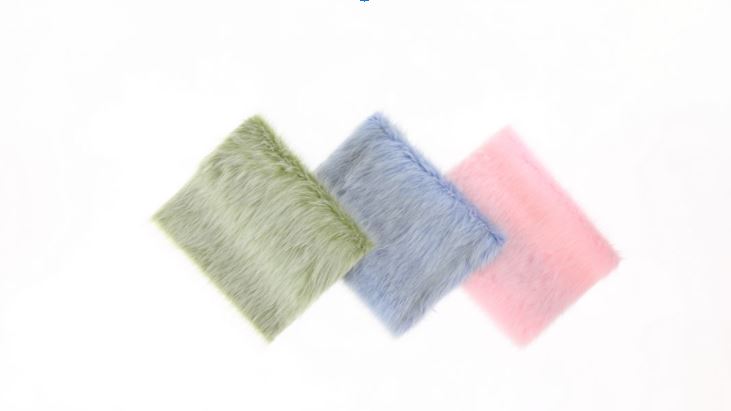Will the Faux Fur Trend Stay? An Analysis of 2025 Fashion Trends

The fashion world is dynamically reshaping itself, progressively integrating innovative and ethical solutions. Faux fur has evolved into more than just a fleeting trend—it symbolizes a revolution in material usage. Its growing popularity is driven by a blend of environmental consciousness, visual appeal, and practical utility. These adaptable products, used in clothing, accessories, and interior design, cater to the needs of modern consumers who value both style and ethics.
Will this trend remain prominent in the future?
All indications suggest it will. It's worth exploring the success behind faux fur, its key advantages, and how it is poised to shape fashion trends in the coming year.
The Rise of Sustainable Fashion
Today’s consumers are increasingly guided by the principles of sustainable fashion, paying close attention to the origins of the materials used in their clothing. While natural fur was long considered a symbol of luxury and elegance, it is now viewed by many as unethical and environmentally harmful. The farming of animals for fur contributes significantly to greenhouse gas emissions and the depletion of natural resources.
Against this backdrop, faux fur is gaining recognition. Advanced production technologies allow these materials to replicate the look and feel of natural fur without causing harm to animals or the environment. Faux fur has become a conscious and stylish choice. Notably, the offerings at efutro.com.pl include a wide range of options—from faux fur by the meter to luxurious finishes for premium apparel.
Faux Fur – The Perfect Alternative
Modern faux furs are far more than simple alternatives to natural materials. Innovative production methods enable them to match—or even surpass—natural furs in terms of aesthetics and functionality. High-quality faux fur is soft, durable, and versatile, making it suitable for use across various industries.
For instance, dyed and printed synthetic furs achieve unique visual effects that are impossible with natural fur. Faux fur in vibrant colors or intriguing patterns inspires fashion designers and interior decorators alike. Plush knit fabrics, with structures resembling fur, are ideal for children’s clothing, toys, and accessories.
Furthermore, faux fur finds applications in specialized fields. Materials for costumes, such as fursuits representing anthropomorphic animals, are increasingly popular within cosplay and artistic communities. The versatility of faux fur makes it an indispensable resource.
Faux Fur Trends in 2025 – What Lies Ahead?
The trend toward faux fur meets the needs of today’s consumers, and forecasts for 2025 suggest this trajectory will only strengthen. This growth is fueled by three key factors:
-
Sustainability – Consumers are gravitating toward products with minimal environmental impact. Faux fur production requires fewer natural resources and has a smaller carbon footprint than animal farming.
-
Technological Advancements – Modern manufacturing methods produce faux furs that are durable, easy to care for, and skin-friendly, making them increasingly appealing and accessible.
-
Lifestyle Changes – More people appreciate clothing and accessories that are both fashionable and ethical. Faux fur meets this demand, allowing consumers to embrace style without moral compromise.
Faux Fur – A Natural Fit for Trends
Thanks to advancements in textile production, faux fur has reached a quality level that allows it to replace natural fur in clothing, accessories, and interior decor. Modern faux fur not only mimics the appearance of natural fur but also offers durability, lightness, and ease of maintenance. These attributes make synthetic fur an ideal choice for fashion designers and interior stylists.
Faux fur is available in a vast array of patterns, colors, and textures, providing endless creative opportunities. Printed or dyed furs allow for effects that are challenging to achieve with natural materials. Faux furs with bold finishes, such as bright colors or geometric and floral patterns, are particularly popular.
This versatility ensures faux fur's application across various domains—from classic fashion collections to theatrical costumes and cosplay materials. The availability of faux fur by the meter enables custom projects and the realization of unique artistic visions.
Is Faux Fur the Future?
Absolutely! Faux fur has become a permanent fixture in fashion and design, meeting the expectations of modern consumers who value both aesthetics and sustainability. Today’s customers seek materials that are not only beautiful and functional but also align with ecological responsibility. Thanks to advanced production technologies, modern faux furs offer a perfect balance between style and ethics.
Companies like efutro.com.pl, offering faux fur by the meter, meet these needs by delivering top-quality products. Customers benefit from a wide range of materials suitable for creating clothing, accessories, and decor, enabling diverse projects.
The growing popularity of faux fur reflects shifting consumer trends. People increasingly seek solutions that combine beauty with responsibility, moving away from natural furs in favor of ethical alternatives. Technological progress ensures that faux fur is not only of exceptional quality but also more widely accessible.
As a result, faux fur materials symbolize a future where beauty, creativity, and environmental care go hand in hand. With its versatility and benefits, synthetic fur is poised to dominate the market in 2025 and beyond.
Conclusion
The year 2025 promises the continued dominance of faux fur in the fashion and design industries. Thanks to its sustainability, versatility, and aesthetic appeal, faux fur aligns with the challenges of our times. Choosing faux fur products is a step toward an ethical, stylish, and opportunity-filled future.
By opting for faux fur, you invest not only in an excellent appearance but also in a better world.

